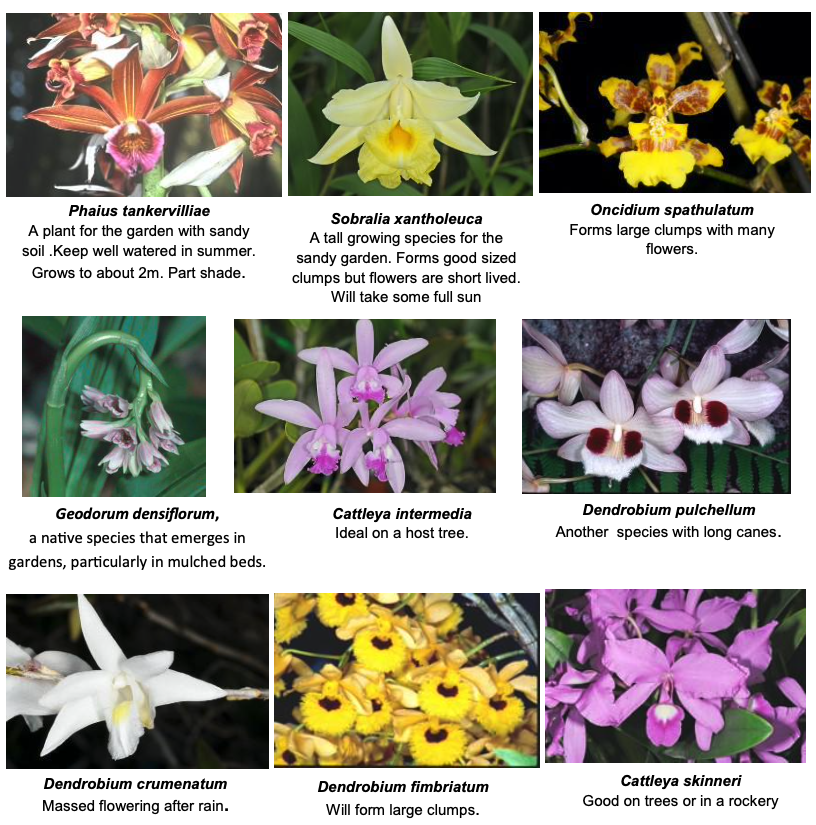Growing orchids in your garden
This article was written in 2020 and is part of our Wayne Harris Article Series. Wayne was an avid orchid-enthusiast, photographer, author of several orchid publications and life-member of the Nambour Orchid Society. After a short illness, Wayne sadly passed away in 2020.
Having made the whole garden a tidy site worthy of praise and admiration have you thought of orchids in the garden? They do have a place apart from in the greenhouse and will add a spark of interest and intrigue to the envy of your neighbours!
Aspect and Bark types: Most of the orchids that we grow in our greenhouses are epiphytes so it would be natural to look to the trees in our gardens as potential hosts. But not all trees have a suitable bark. Most Eucalypt species have a very smooth bark or one that is shed annually. Many palms have a stem which appears to not have bark but the surface is indeed rough enough to make a very suitable substrate for orchid growth. The most important attribute is that the host plant does bark regularly.
Mounting the plant: There are many ways that the plant can be attached to the host. My favorite method is to use large wire staples and a good hammer. The plant must be firmly attached.
The choice of plants is almost endless. Small seedlings may be difficult but keikes with two or more leads are perfect. Divisions from larger plants or advanced seedlings are also suitable.
Many orchids also grow as lithophytes, I.e. they attach their roots to a rocky surface for support. In this case a rockery in the garden can accommodate certain orchids.
You will also find that by locating your new plant close to the base of the host e.g. a clump of palm stems, is a very convenient position for the orchid.
A few selected rocks will also enhance the position.
Dendrobium speciosum in a rockery
Dendrobium speciosum used as a feature plant
Shade: A few plants may survive beneath full sun conditions but most will appreciate filtered light, particularly during the hotter times of the day.
Support: plants that are large such as some of the Dendrobium and Vanda species may require staking to maintain stability.
Timing: It is important to time the operation to coincide with the season of active root growth and this is generally in spring or early summer.
Watering: every time that you pass the plant with a hose in your hand, give the plant a splash! My outdoor plants get very little attention and natural rainfall is mostly sufficient.
Fertilizing: not often!
Pests & diseases: be vigilant especially for the dreaded Dendrobium beetle. Scale and mealy bug can be controlled with white oil or eco-oil.
Terrestrial orchids These plants require special treatment because they are dependent on soil based conditions for optimal growth. If planted in the ground the soil must be free draining with a good quantity of coarse sand as the main component.
Written and photographed by Wayne K.



